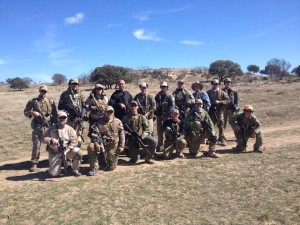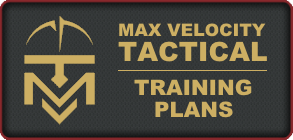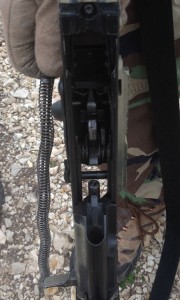Student Review: Texas Combat Team Tactics Class Feb 2015: ‘AgingDrifter’
AAR CTT/Mobility Texas Feb 2015
[I’m hesitant to write an AAR given that others have done an excellent job before me, but I will focus on certain aspects that may be helpful.]Why attend? Learn simple drills to keep you alive. I very much want to get away from any scary people shooting at me; these drills get you moving and off the X. If you haven’t trained, you may be an internet scholar and “know” what to do in your mama’s basement, but when the time comes, there is a good chance you’ll freeze unless you’ve seen it in training. You still may freeze momentarily even after training, but you are much more likely to snap to, break the freeze and get on with it.
I’ve attended Max’s CTT in WV, both the 2 day and the 3 day iterations. I’m 58 with no military experience, with some square range experience from some high profile instructors. I know I need “continuing education” and I live in Texas, so attending this class was a certainty (screw Dulles especially), but I was surprised at the difference the terrain made. In WV, there are short sight lines due to the heavily wooded steep hills. The Texas ranch was open with few hills; however, there were stands of trees as well as creek beds and high grass. This allowed for “patrolling” formations that differed from the simple file in WV. Also, the space between buddy pairs and between teams was substantially greater in Texas. This provided an opportunity to see the action develop, both as a participant and as an observer when the other students were going through their exercise.
One benefit of the WV terrain is that on break contact right/left, you quickly see how it is necessary to get on line and fight back, instead of just mindlessly peeling until you’re circling the enemy. That’s not a concern in Texas. WV also has more microterrain that provides for good bound points and early rally points. You can bound a long way in Texas before you’re out of sight of the enemy. Mercifully, Max would stop the exercise after a reasonable period of bounding.
The Texas Ivan targets were not pop-ups, but this didn’t detract at all from the learning experience. All of the students could shoot, so visible reaction to hits was not a concern. Of course, some distant steel would have provided more cowbell…
This was not a patrol class, but the lectures and the exercises build the foundation of patrol movement. You will definitely take away not only the need to train with your home team, but also the necessity to develop SOPs for responses to contact.
It seems to me that fights are won—you get your ass away to fight another day of your choosing—by returning fire, taking cover, returning appropriate fire, then rolling into your break contact drill. If the enemy wants to pursue, hurt him with a hasty ambush, and repeat until they’ve had enough.
Momentum always and intelligent aggression when the situation requires that you attack. Don’t mistake breaking contact for some cowardly pell-mell dash like a flock of turkeys—Max makes it clear that a properly executed break contact comprises an initial response that gains at least enough fire superiority to suppress the enemy, then accurate sustained fire and movement by teams. Your intent is to keep the enemy’s head down and the way to do that is with accurate fire. Basically while your other element moves, shoot the bad guy in the head.
One thing we didn’t do was deal with a (simulated) casualty. But then that’s a matter of essentially winning the fight, dragging the casualty to cover, treating what you can, then littering out. Thankfully for this old boy, the additional suck of dealing with a casualty was beyond the level of this class.
TACTICAL FITNESS TRAINiNG PLANS
Mobility. Before the class, I thought this wouldn’t be terribly interesting. I was wrong. Max, from more experience than I would care to think about, has a lot to say about how you might find yourself in a vehicle and about the situations that might generate.
When things go bad, you are looking at break contact procedures initiated from an immobilized vehicle. Unrelenting accurate fire, and continuous movement made possible by that fire, is your plan. Get away from the bullet magnet.
For you greybeards sitting on the fence, just sign up and do the class. The exercises are not that damn taxing. The youngsters out there will obviously keep low(er) and move fast(er), but listen to that little voice that tells you that you need to increase your odds. Your family and your neighbors are depending on you, and there are people you will never know who will be better off if you live to defend rightful liberty. It’s not in the nature of youth to consider this, but you have no excuse.
Finally, believe me when I say that Max is a gifted trainer. It’s abundantly clear that he has trained a lot of people, from young, pub-crawling, curry-craving British recruits to old Texas lawyers. He is all about maximum learning in a safe environment. You will crawl/walk/run, with lectures, demonstrations and his intense scrutiny on the range, both for safety issues and for tactical errors. You will have a ridiculously good time, with teammates who you will be proud to achieve with. And bring an AK. BFYTW.
Gotta love the AK guys. Here’s an AK from the class (there were two):
Shepherds crook broken. ‘No AR’s were harmed in the making of this video.” Just sayin’……BFYTW ![]()
But they make great flank effects team weapons, because they sound like bad guys….



